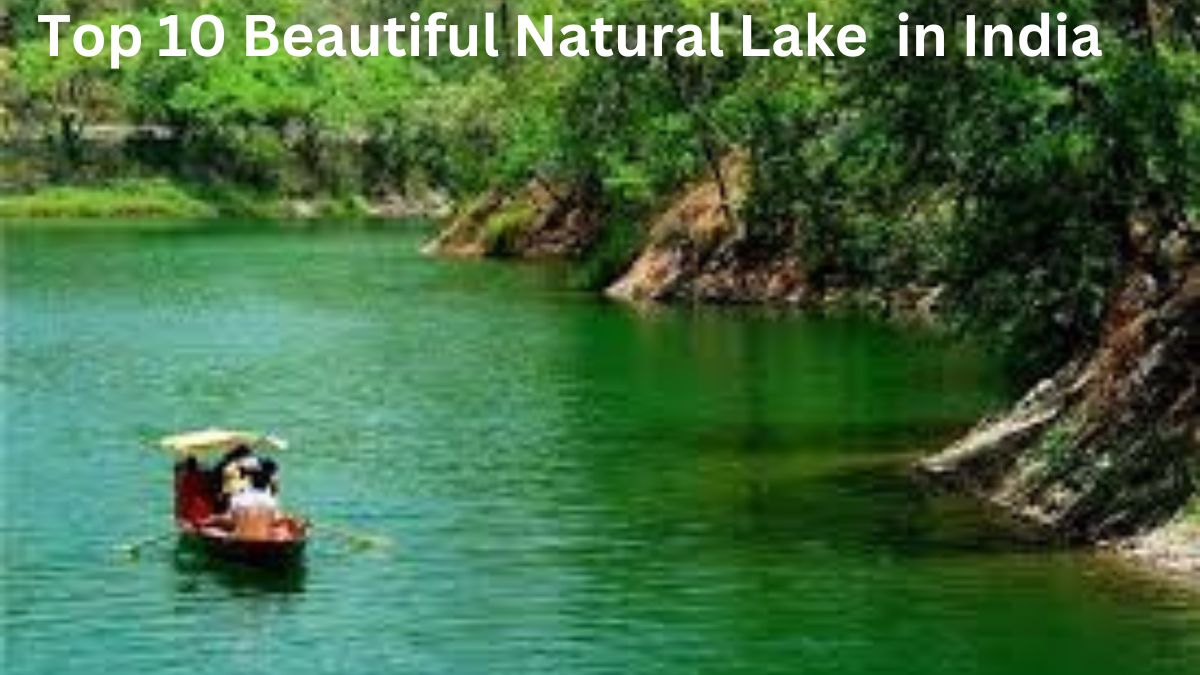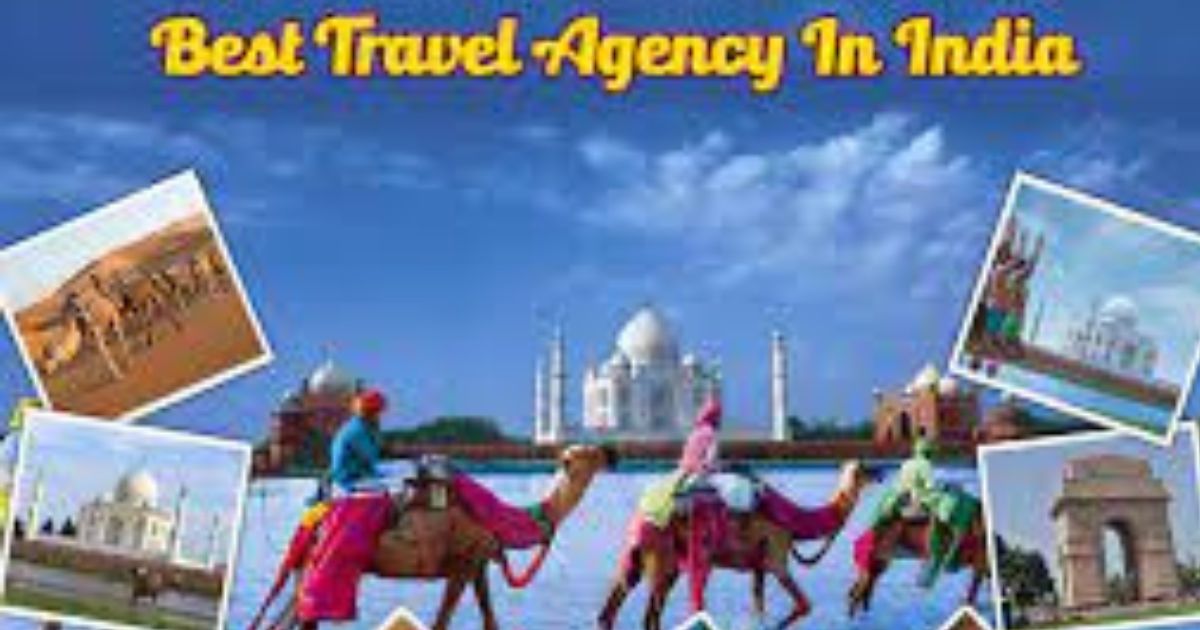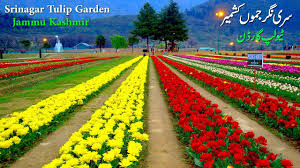Introduction:
Natural Lake Area Lakes provide a valuable water supply for drinking, agriculture, fishing and recreational purposes. Several similar beautiful lakes are found in India.
In this article, I described the top 10 beautiful natural Lakes to travel with family & friends.
In 2019 the data says that over 17.9 million tourists arrived in India compared to the year of 2018 is 17.4 million representing 3.5% growth. This makes India the 22nd most visited nation globally and the 8th position in ASIA.
1. Chilika Lake-Odisha:
Chilika Lake is a brackish water lagoon, spread over the Puri, Khordha and Ganjam districts of Odisha state in INDIA. It covers over 1100 square km. Chilika Lake is the biggest Lake in India after Vembanad Lake.
This lake is the largest coastal lagoon in India and the largest brackish water lagoon in the world. It is the largest wintering ground for the majority of birds on the Indian subcontinent. This lake is home to several threatened species of plants and animals.
Chilika Lake has International Importance. It is designated as “The Ramsar Site” wetland. The Nalaban Island within the Lake will be notified as a Bird Sanctuary under the Wildlife Protection Act 1972. Chilika is the most beautiful natural lake in India.
How to reach Chilika from Bhubaneswar:-
Tourists planning a road trip to Chitika Lake from Bhubaneswar and Cuttack are first required to reach Balugaon, which is around 2 hours from Bhubaneswar.
From there you can get a taxi or auto rickshaw to reach Rambha or Barkul. It is only 70 km. Away from Bhubaneswar.
Best Time to visit Chilika:-
From October to March is the best time to travel to Chilika to see the migrating birds. You can see Irrawaddy dolphins in more than 100 numbers, 228 species of Birds and 335 species of Fish at Chilika during your travel.
From 1989-1990 an estimated two million birds visited Chilika Lake. Odisha Tourism Department and Dolphin Motorboats Association, an NGO at Satpada report that nearly more than 40,000 tourists visit Chitika every year.
2. Dal Lake-Kashmir:
Dal Lake is located in Srinagar, in the state of Jammu & Kashmir. Srinagar is the Capital of Jammu. It is an urban lake. Dal Lake is a beautiful in India and the second largest lake in the state of Jammu & Kashmir.
It is the most visited place by tourists and local people. It is variously known as “Lake of Flowers”.Urban Lake is integral to tourism and recreation in Kashmir and it is named the “jewel in the crown of Kashmir” or “Srinagar of Jewel”.
This Lake is also an important source for commercial operation in fishing
and water plant harvesting. Its catchment area is 316 square kilometres.
The major attraction of the lake is the canopied Shikaras sailing on the lake. The houseboat on the lake is also the top attraction and the best accommodation option in Srinagar for tourists.
The lake covers an area of 18 square kilometres and it is part of a natural wetland that covers 21.1 square kilometres including a floating garden. The floating garden is known as “Raad”.Dal Lake is the most beautiful lake in India.
How to reach Dal Lake from Srinagar:-
The quickest way to get to Srinagar Airport to Dal Lake is by taxi which costs Rs.650/-Rs.800.It is 17 km. Distance from Srinagar. You may go by bus, train and auto rikshaw also.
What month is the best time to visit Dal Lake:-
May to November is the best time to visit Dal Lake at Srinagar. It is very climate pleasant during winter.
Every year, more than 12 Lakh arrivals of tourists in Kashmir from different places all over the world to see the beauty of Kashmir & Dal Lake in Srinagar.
3. Vembanad Lake-Kerala:
The Vembanad Lake is the longest in India. Vemanad is a very beautiful lake which is the largest lake in the state of Kerala. Its area is 2033 square kilometres & maximum length is 96.5 kilometres. It is the second-largest Ramsar site in India. It is also known as Vembanadu Lake in Kottayam.
Every year the Nehru trophy Boat Race is conducted in the Vembanad Lake in Kerala. The government of India has identified the Vembanad wetlands under the National wetland conservation program.
The beautiful Vembanad Lake is the heart of Kerala.Every year lakhs of domestic and foreign tourist travel to this lake to enjoy it with their family.
The Kumarakom bird sanctuary is located on the east coast of the lake. The lake has become a major tourist attraction. This Lake is known by three names Punnamada Lake in Kuttanad, Kochi Lake in Kochi and Vambanadu Lake in Kottayam.
Vembanad Lake is a popular tourist destination in INDIA. It provides boating, fishing, and sightseeing experiences that are truly exhilarating the tourists.
Vast array of rivers and canals that Kottayam is blessed with emptying itself into picturesque Vembanad Lake. It is a very lovely place to go picnic and has also turned into a prominent backwater destination.
Vembanad Lake has its source in four rivers, Meenachil, Achankoli, Pampa and Manimala. The Vembanad wetland system spans a mammoth area of 2033.02 sq. km. Vembanand Lake is the most beautiful lake in India.
How to reach Vembanad Lake in KERALA:-
Vembanad Lake spreads its beauty across many popular cities and tourist destinations in KERLA. Visitors can reach this pristine lake from major destinations like Alleppey, Kochi, Kumarakom, Kuttand, Kottayam and Ernakulam.
Which month is the best time to visit Vembanad Lake in KERALA:-
The best time to visit Vembanad Lake is between September to March every year. The weather from September to March at Kerla is very pleasant to travel.
As per the report of the Kerala Tourist Statistics report says that in 2018, foreign tourists visited Vembanad Lake at Kerla nearly 0.63 million whereas 4.48 million domestic tourists visited in 2018.
4. Loktak Lake-Manipur:
Loktak Lake is a freshwater Lake in Northeast India. Loktak is a very beautiful lake in India It is the largest freshwater lake in Asia. It is a pulsating lake with a surface area of 250sq.km to 500 sq km.
The day is observed in Manipur every year on the 15th of October. This Lake plays an important role in the economy of Manipur.
This Loktak Lake in Manipur serves as the source of water for hydropower generation, irrigation and drinking water for the people of Manipur.
This lake is also a livelihood for the rural fishermen who live in the surrounding areas. Loktak is the largest freshwater lake in Northeast India. It is also known as the floating lake for the numerous phumdis or masses of vegetation it supports
The pundits float around the lake's surface due to decay from the bottom.
Loktak Lake is not only the largest freshwater lake in northeast India. It is also home to a floating island called “phumdis”.
How to reach Loktak Lake in Manipur:-
This iconic lake is located in the Bishnupur district at a distance of 53 km. from Imphal. It is also known for its circular floating swamp called phumdis” in the local language.
However, you can reach 27 km from District Headquarters. From Jirbam Railway station it is 240 km. By Road, it is located at Moirang bus stop
only 3 km.
What month is the best time to visit Loktak Lake in Manipur:-
The month of February to March is the best time to visit this lake in Manipur. Boating and water sports are organized here at Takmu Water Sports Complex.
5. Pangong Tso Lake-Ladakh:
Pangong Tso Lake is an Endorheic lake spanning eastern Ladakh and western Tibet. It is 134 km. Long and divided into five sub-lakes called Pangong Tso, Tso Nyak, Rum Tso and Nyak Tso.
Approximately 50% of the length of the overall lake lies within Tibet in China & 40% in Ladakh, India and the remaining 10% is a disputed area. This lake covers almost 700 square kilometres. During the winter the lake freezes completely.
Pangong Tso Lake is very popular for its changing colour ability. Its colour changes from shades of blue to green to red. It is one of the highest-altitude lakes in the world that is filled with saline water.
It is located at an altitude of 4350 meters above sea level. Ladakh is famous for breathtaking landscapes, crystal clear skies, the highest mountain passes, thrilling adventure, Buddhist Monasteries and many local festivals.
Pangong Tso is in disputed territory. The Line of Actual Control (LAC) passes through the lake. A section of the lake is approximately km from the LAC, which is controlled by the Chinese government but claimed by India, which is declared as a disputed area.
The foremost thing to see at Pangong Tso Lake is its beauty. The mountains with their gradual slopes meet the blue meditative waters of the lake. It is the sight that remains lodged in your memory for a long time.
The Brahminy ducks can also be seen standing on the banks of the lake. The lake is extremely popular among photographers, selfie enthusiasts and those on a bike trip to Ladakh. Pangong Lake is the most beautiful lake in India.
How to reach Pangong Tso in Ladakh:-
The beautiful Lake Pangong Tso can be reached after a five-hour drive from Leh. From Leh, one can pass through the Changla pass and then through Taste. There are regular bus services run by the state road transport services of (J&KSRTC). Taxi can be hired from Leh to Pangong Lake.
What month is the best time to visit Pangong Tso of Ladakh:-
The best time to visit Pangong Tso Lake is during the month of summer from (May to September) every year. In the winter months, the lake would be frozen making the place less enjoyable.
The number of tourists visiting Leh was approximately 241285 domestic tourists and 38685 foreign tourists visited in 2020.
6. Sambhar Salt Lake-Rajasthan:
The Sambhar Salt Lake, India’s largest inland salt lake, is located in Sambhar Lake Town, Jaipur district of Rajasthan, India. It is 80 km southwest of the city of Jaipur and 64 km northwest of Ajmer, Rajasthan.
This lake receives water from six rivers a Month, Rupangarh, Khari, Khandela, Media and Samod. This lake catchment area is 5700 square kilometres.
Sambhar Salt Lake is India’s largest saline lake and it is the source of most of Rajasthan’s salt production. It produces 1,96,000 tons of clean salt every year which is around 9% of the salt production of India.
About 80 km southwest of Jaipur in Rajasthan, the declared Ramsar site is the largest inland salt lake in India.Most of which Dries up to form a large pink dustbowl under the summer sun.
During the monsoon time, the same turns into a cluster of wetlands, that is flocked by thousands of migratory birds every year. Sambhar is known for the Sambhar Salt Lake, which is the largest inland salt lake in India.
It derives its name from Maa Shakmbhari Devi, Goddess of the Chauhan clan, whose 2500-year-old temple is located 280 km from the Town. Sambhar Lake is nearly a 2-hour journey from Jaipur city Rajasthan. It is nearly 100 km from Jaipur city.
7. Nainital Lake: Uttarakhand:
Nainital, the charming Himalayan lake town, is a picture postcard-perfect hill station and one of the most popular Northern India.
It is commonly known as the “ Lake District”, Nainital is nestled high up in the Kumaon Himalayas at an altitude of around 2000 meters above sea level. This is a beautiful town surrounded by seven hills, popularly known as “ Sapta Shring”- Ayarpata, Deoparta, Handi Bandi, Naina, Alma, Lariya Kanta and Sher ka danda.
The majestic mountains and the sparking waters of the lake add an immense lot to the beauty of the townThe town is centred around the emerald mountain lake Naini, which on most days is dotted with colourful sailboats.
According to mythology, the lake is believed to have been formed when the eyes of goddess “Sati” fell at this spot while her body was being carried by Lord Shiva after her death.
The summer capital of the United Provinces during the British era, the town has a strong colonial heritage with vibrant clusters of villas and bungalows. Homesick Britishers used to flock to this quaint town spread over a forested valley.
It is also known for the revered Naina Devi temple, which stands on the edge of the lake. Nainital is not only a famous tourist destination but is also known for its prestigious educational institutions and schools, which have stood since the British era.
Nainital is also a popular hot-air ballooning and mountaineering.
Best Time to Visit
Nainital is an all-year destination but the weather is the best between March and June. It receives heavy snowfall in winter and turns into a white wonderland, making it a popular Christmas and New Year destination.
By air:
The nearest airport to Nainital is situated at a distance of 70 km. The Pantnagar Airport is a two-hour drive away. Direct flights to Pantnagar are available only from New Delhi. Another major airport serving Nainital is the Indira Gandhi International Airport (IGI) situated in New Delhi.
By train:
Kathgodam railway station, about 23 km away from Nainital, is the nearest railhead serving this gorgeous hill station. Several direct trains are running daily from the metro cities such as New Delhi, Kolkata, Agra and Lucknow to Kathgodam. One of the most convenient options from New Delhi is the Ranikhet Express, an overnight train that reaches Kathgodam early morning.
8. Kolleru Lake: Andhra Pradesh:
Kolleru Lake, in the northeastern state of Andhra Pradesh, India, lies between the Godavari and Krishna river deltas near Eluru. During the height of the summer monsoon rainy season, the lake may expand to 100 square miles (260 square km).
Kolleru Lake is one of the 75 Ramsar Sites in India. A Ramsar Site is a wetland site of international importance under the Ramsar Convention, an intergovernmental environmental treaty established in 1971 by UNESCO.
Kolleru Lake is one of the many places in India that sees bird migration on a very large scale.
Every winter, lakhs of migratory birds from Northern Asia and Eastern Europe make their remarkable winter journey to the warmer (comparatively) climate of India.
Kolleru Lake, located in Andhra Pradesh’s Eluru district, between Krishna and Godavari deltas, is Asia’s largest shallow freshwater lake, and one of the places in India that sees bird migration on a very large scale.
When the weather starts to turn unbearably cold with blizzard-type situations back home, these birds leave their home ground and fly into places with warmer climates to nest and breed.
Kolleru Lake is one of the many places in India where their long voyage comes to an end before they fly off to their home grounds after the season.
Kolleru Lake falls on the migratory route called the Central Asian Flyway (CAF). The CAF covers a very large area of Eurasia, with a total of 30 countries, including India.
There are a total of nine flyways of migratory birds around the world, and India has three of them – the Central Asian Flyway, East Asian Flyway, and East Asia–Australasian Flyway.
Kolleru Lake is a sight to behold when lakhs of birds arrive. The state government has made a tremendous amount of effort in the form of facilities for these birds to use, such as planting of trees for them to perch and nest, and installation of several artificial perches where these birds can rest.
Places nearby Kolleru Lake
- Atapaka Birds Sanctuary is 36 km away.
- Manginapudi Beach is 90 km away.
- Guntupalli Caves which is 85 km away.
How to reach Kolleru Lake?
By Air
- The nearest airport is Vijayawada which is 56 km away
By Train
- The nearest Railway station is at Eluru which is 15 km away.
By Road
- Kolleru is 1.5 km from Kaikaluru. The direct bus is available from Vijayawada, Eluru.
9. Pushkar Lake: Rajasthan:
Pushkar Lake or Pushkar Sarovar is located in the town of Pushkar near Ajmer city in Ajmer district of the Rajasthan state of western India.
Pushkar Lake is a sacred lake of the Hindus. The Hindu scriptures describe it as "Tirtha-Guru" [Thirtha Raj]– the preceptor of pilgrimage sites related to a water body and relate it to the mythology of the creator-god Brahma, whose most prominent temple stands in Pushkar. The Pushkar Lake finds are mentioned on coins as early as the 4th century BC.
Pushkar Lake is surrounded by 52 bathing ghats (a series of steps leading to the lake), where pilgrims throng in large numbers to take a sacred bath, especially around Kartik Poornima (October–November) when the Pushkar Fair is held.
A dip in the sacred lake is believed to cleanse sins and cure skin diseases.
Over 500 Hindu temples are situated around the lake precincts.
Tourism, deforestation and pollution in the surroundings have taken a heavy toll on the lake, adversely affecting its water quality, reducing the water levels and destroying the fish population.
Pushkar Lake is considered one of the holiest lakes in India by Hindus and Sikhs. The lake is surrounded by around 500 small temples, 52 ghats (steps) and havelis (old merchant houses).
Legend says it was magically formed by the Hindu god Lord Brahma who dropped a lotus flower on the ground to kill a demon and a lake was formed out of the desert.
Every year during ‘Kartika’ – the Hindu full moon month in October and November, Hindu and Sikh pilgrims come from across India to bathe in the holy water to purify themselves, cure diseases and cleanse their souls. At night hundreds of oil lamps placed on leaves and floated in the lake. We were visiting Pushkar in January so we missed the religious fair.
By Air:
Pushkar is 146 km from Sanganer airport in Jaipur which is around 3 hours away. It connects Abu-Dhabi, Sharjah, Singapore, Dubai and Muscat through international flights. You can avail of road transport to reach Pushkar conveniently.
Delhi to Jaipur Flights Schedule (Non-Stop)
By Train:
Since Pushkar has a mountainous location trains directly to Pushkar are infrequent. The Ajmer station nearby is closest and connected to all the major cities of Rajasthan.
The Shatabdi and Pink City Express are the best trains to travel to and from Ajmer and Delhi. Besides this, buses are plying between Pushkar and Ajmer (30 minutes), Jaipur (3 hours), Udaipur (6 hours) and night buses to Delhi (10 hours). Pushkar is well connected to the National highways of Rajasthan as well as the rest of India.
By Road:
Buses leave from Ajmer from the bus stand and the railway station. Step off your train and walk out of the station. You will catch sight of a pedestrian bridge above the main street. Buses are plying between Indore and Pushkar, Nagda and Pushkar, and Jaipur and Pushkar regularly to aid travellers to Pushkar.
10. Renuka Lake: Himachal Pradesh:
Renuka Lake is in the Sirmaur district of Himachal Pradesh in India and it is 672 m above sea level. It is the largest lake in Himachal Pradesh, with a circumference of about 3214 m.
This lake was named after the goddess Renuka and has been designated as a Ramsar site since November 2005.
According to the Puranas, the Renuka Tirtha is considered the birthplace of Parashurama, the sixth incarnation of Vishnu. Maharishi Jamadagni and his wife Renuka are regarded to have meditated for a long time at a hillock known as Tape Ka Tiba near Renuka Lake. With the blessings of Shiva, Vishnu is believed to have been born as their son.
Located in the Sirmaur District of Himachal Pradesh, the Renuka Lake is at an elevation of 672 metres above sea level. The lake houses many fishes and other aquatic beings.
Boating facilities are also available at the lake, and the entire boating experience heightens the joy and fun of being at the lake. Another lake which is dedicated to Lord Parshuram, the son of Goddess Renuka, is also present in the vicinity of the Renuka Lake.
Tourists also get to visit some temples while at Renuka Lake, and this fact primarily appeals to the religious and devoted people, who get one more reason to plan a trip to the serene and beautiful lake.
All in all, Renuka Lake is the perfect holiday destination that can be visited all year round and beckons nature lovers and pious people from all across the nation.
Ideal Time To Visit: Renuka Lake temperature usually hovers around 18.8 degrees Celsius and is a year-long destination. Although, the best time to take a trip to Renuka Lake is either from April to June or September to November.
By Rail:-
The nearest railhead is at Ambala (95 km) Dehradun (105km) and Chandigarh (95 km). The nearest airports are Chandigarh and Dehradun. Taxis/buses are available for Renukaji at all places.
Ways To Travel
Most couples and friends travel to Renuka Lake in their car or bike. With family and kids, a hired cab is a good option. Alternatively,
- A non-AC HRTC bus departs every hour from ISBT Kashmiri Gate Delhi. The fare is approximately INR 250 per person.
- Go from Delhi to Chandigarh via flight and from Chandigarh to Nahan by bus or cab. Renuka Ji Lake's distance from Chandigarh is approximately 130 kilometres.
- Delhi to Ambala Cantonment station via train. From Ambala to Nahan by bus or cab.
- When travelling to Renuka Lake from Dehradun, train, bus, or cab is a good option.
FAQs:-
1. Question:-Which is the second largest lake in India?
1. Answer:-Vembanad Lake-Kerala is the second largest lake in India.
2. Question:-Which country in the world has the most natural lake followed by Russia and USA?
2. Canada has the most natural lake in the world followed by Russia and the USA.
3. Question:-How many natural Lake in India?
3. Answer: - There are 62 important natural lakes in India.
4. Question:-Who is the Biggest Lake in India?
4. Answer:-Wulak Lake is one of the biggest freshwater lakes in Asia and it is formed as a result of tectonic activity. Chilika Lake of Odisha is the largest lake saline water lake in India. The beautiful lake Vembanad Lake is one of the longest lakes in India.
5. Question:-Which state has the most natural lake in the world?
5. Answer: - Alaska is the state with the most naturally formed lakes, containing 3197 lakes and over 3 million unnamed lakes.
Conclusion:-
Tourism offers multiple benefits to Individuals as well as society. Nowadays the tourism sector is the major source of not only developing the GDP of the country but also creating huge employment opportunities in India. People get to see, experience and know how to lie beyond the world they live in.
Thus it enriches their knowledge about the people, customs and traditions of the places. In 2020, India the travel & tourism sector of India contributed 4.7% of the GDP of the country.
In the year 2024 Outlook for Tourism in India. It estimates that: The sector will contribute almost INR 21.15 trillion ($253 billion) to India's GDP in 2024. Jobs in the industry will increase by 2.45 million this year, equaling one in 11 jobs in India. International visitor spending will grow more than 17%.











